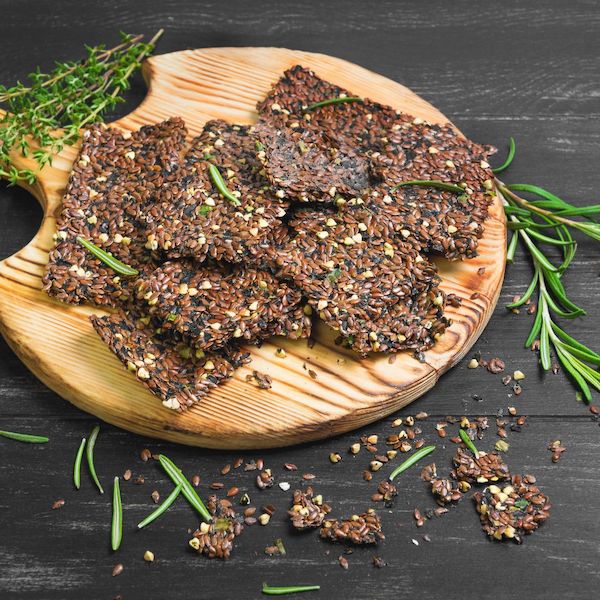I think if you talk with anyone who is a healthy eater and really pays attention to what they eat, you’ll find they can move backward in time and remember a place when they weren’t eating right.
Yes, there was a time when I thought rice cakes were good. I grabbed those “healthy” granola bars or packs of “low-calorie” snacks just to reduce the hangry feeling that comes in the mid-morning or afternoon. Which usually happens after eating a not-so-healthy breakfast or lunch without the nutrients to help you throughout your day.
We’re in a world where gazillions of manufacturers are trying to create perfect food products for us to grab-and-go. All they’re really creating is unhealthy, wasteful food items that aren’t doing anyone any good.
Think basic.
Think as close to nature as possible.
Think filling – enough to ensure you aren’t hangry again a few minutes later.
Think GORGEOUS! Because if you eat the right foods, you’ll feel better, inside and out! That’s what food is supposed to do.
Manufacturers would have you believe it’s difficult to make your own meals, including snacks. And I get it – we all lead BUSY lives. Do you have time to spend minutes or even hours in the kitchen planning snacks for the week?
You can … if you do it the right way.
It requires you to fill your pantry with the good stuff. Spend a little time building healthy snacks you can grab-and-go whenever you choose.
That’s how you create a wellthy life.
What do those snacks look like? Read on … you’re gonna love them as much as I do.

Plant-rich snack #1 – Nuts
I think nuts get a bad rap. They’re often reported as having bad fat, or simply not tasting very good. It’s just not true.
Nuts are loaded with plant-based protein, heart-healthy fats, vitamins, minerals, and fiber. Is one better than another? Nope. They each have their own benefits. That’s why it’s a good idea to mix and match.
Almonds are great for skin health as they are loaded with vitamin E.
Cashews are loaded with magnesium, which supports nerve function and energy production, and has also been shown to reduce cholesterol levels and keep blood pressure stable.
Pistachios are a complete plant-based protein, which means they have a full amino acid profile. They’re a great source of fiber and provide you with a quick energy boost.
Walnuts are the brain health nut. They’re rich in alpha-linolenic acid, which is an omega-3 polyunsaturated fat.
Pecans are great for heart health and are especially high in antioxidants. They’ve been linked to helping prevent chronic diseases like cancer and heart disease as well as help prevent and repair cellular damage.
Macadamia nuts are high in monounsaturated fats, which are the healthy fat that lowers cholesterol. They also have the lowest amount of carbohydrates.
Brazil nuts are best for thyroid health and contain selenium which encourages hormone balance.
Are there other nuts that can benefit your health? You bet! With over 50 nuts from around the world, each has a unique nutritional profile that can benefit your health.
The critical thing to note is to pay attention to the source. Skip the roasted, salted, or anything coated in sugar or sauces. Instead, focus on buying organic nuts that are raw and close to their original form.
Then mix and match. I often eat a handful mid-morning and another one mid-afternoon. They tie me over until lunch and dinner, and I know I’m giving my body a boost.
Plant-rich snack #2 – Chia pudding
A lot of people reach into the fridge for snack time. What comes out is rarely something good for you … Unless you make it yourself.
If you haven’t tried making your own chia pudding, make yourself a treat. It’s easy to make and delicious! Buy yourself a few mason jars, and it’s easy to create a week of treats. Here’s how.
Start with 2 tablespoons of chia seeds. You can buy a huge bag at Costco – it’ll last you a very long time.
Add a half cup of liquid – any liquid will do. Some milks have different protein and fat content, choose what works best for you. Go with unsweetened milk: almond, coconut, or cashew. Your goal is to have the least amount of additives possible.
Then flavor it up! If you need sweeter, stick with just a teaspoon or two of something natural – pure maple syrup, honey, or jam will do. You can also add a flavor punch, such as vanilla extract, almond extract, cacao powder, ground cinnamon, or ground cardamom.
Then top it off. You can mix and match a ½ cup of fruit or nuts. Get creative. Include things like:
- Raspberries
- Strawberries
- Blueberries
- Blackberries
- Sliced banana
- Diced mango
- Chopped pistachios
- Chopped pecans
- Flaked coconut
- Cacao nibs
Once again, go organic wherever possible. And stick with natural fruits without added chemicals or sugars.
If you like things smooth, you can always throw them in a blender.

Plant-rich snack #3 – Roasted chickpeas
If you have a craving for something salty, it’s time to make up a batch of roasted chickpeas. Yes, you can find them in your supermarket aisles filled with a variety of “bad.” but when you discover how easy they are to make, you can create a variety of snacks yourself.
Roasted chickpeas are easy to make. Use a can of chickpeas, drain and rinse, then coat with a teaspoon or two of olive oil, and roast them in a 400-degree oven. It can take 30 to 45 minutes, depending on your oven. You can also mix in spices to give them interesting flavors. Stay simple with a touch of salt and pepper. Or go wild – chili, cumin, and oregano will give them Mexican flair.
Plant-rich snack #4 – Hummus and Bean dips
Yes, you can buy hummus. There are many fantastic hummus dips that are super good. It’s my go-to appetizer when I’m planning a get-together.
What’s more, hummus is a super nutritious snack that provides many vital nutrients. It’s good for your health!
Depending on what hummus you buy, a 2-tablespoon serving will give you 2 grams of protein, 7 percent of your daily manganese and copper, and 2 percent of your daily phosphorus, folate, iron, zinc, and thiamine. This is a great way to get lots of things a plant-based eater needs.
In addition, it’s been proven to ease inflammation, support digestive health, and promote heart health. Because it’s free of gluten, nuts, and dairy, it’s one of the most palatable snacks you can consume.
What’s more, it’s equally as easy to make yourself. All you need is a high-speed blender. Throw in:
- 1 ½ cups canned chickpeas, drained
- ½ cup smooth tahini
- 2 tablespoons extra-virgin olive oil
- 2 tablespoons fresh lemon juice
- 1 garlic clove
- Salt and pepper, to taste
- As much water as needed to create a smooth consistency
Once you have your hummus perfected, start playing with taste. Add things like paprika, red pepper flakes, chili powder, or more garlic. You’ll find one (or two or three) that you prefer.
Plant-rich snack #5 – Multi-seed crackers
When I’m in snack-mode, I want salty, crunchy, and satisfying. That’s why those handy little packages have become a mainstay in the snack industry.
But those snack packs are processed – foods we need to avoid.
Whether you want something to go with hummus, or just to snack on alone, instead of buying unhealthy crackers, I dare you to make them instead.
Why? Because they’re super easy! And once you start making your own, you’ll never go back to buying them in a store. A quick search online will bring up many recipes. Or start with one of my favorites … it’s super easy!
Seed Crackers
- 1 cup sunflower seeds
- ¾ cup pumpkin seeds
- ½ cup chia seeds
- ½ cup sesame seeds
- ¼ cup flaxseed
- 1 ½ cups water
- 1 tablespoon dried herbs of your choice
- 1 teaspoon salt
Preheat oven to 325F.
Mix all ingredients together and leave for 10-15 minutes to allow seeds to soak up the water.
Stir. Then spread the mixture on two lined baking trays. The ideal thickness is about ? inch.
Bake for one hour, switching the trays halfway through. Test for crispness and return to the oven until the desired texture.
Remove from the oven and cool before storing in an airtight container.



+ show Comments
- Hide Comments
add a comment